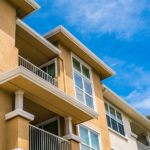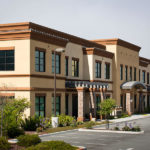Wood-Destroying Pests in the Bay Area and How to Treat Them
Treatment Guide for Wood-Destroying Pests in the Bay Area
You might not notice at first, but when you do—if you are like most homeowners—your heart will sink. We’re talking, of course, about damage to your home, caused by wood-eating insects. Is it a termite infestation? It could be, but that’s not the only option. If it is termites, which kind of termite? And if it isn’t a termite, what is it?
How Inspectors Diagnose and Treat Each Pest
- Drywood Termites: Live inside wood with small colonies; treat with targeted spot treatment or fumigation.
- Subterranean Termites: Live in soil under and around your home; require soil treatments along the foundation—tenting won’t eliminate them.
- Dampwood Termites: Thrive in wood with high moisture; eliminate the water source to resolve the infestation.
- Wood-Boring Beetles: Only “reinfesting” beetles require treatment. If you see pin-sized holes and fine powder falling from wood, it’s likely a reinfesting species. Over 95% of beetle infestations can be handled with targeted treatment—be wary of recommendations for costly tenting.
- Fungus/Dryrot: Caused by water; treat by removing moisture, scraping affected wood, and applying borate solutions.
Common Wood-Destroying Pests
In the Bay Area, there are three types of termites you are likely to encounter: drywood, dampwood, and subterranean. In addition, other pests can damage wood. Carpenter ants resemble termites, and they certainly cause damage, but they don’t eat the wood like termites do. Wood boring beetles do eat wood, and they lay their eggs inside cracks in the wood, too. There are different types of wood-boring beetles, though, and while some will reinfest, others leave the wood as soon as it’s no longer a tree, so they’re not as problematic in a house.
How Can I Tell If I Have a Drywood Termite Problem or Something Else?
Different types of termites behave very differently. Dampwood termites, as their name implies, only live in wood that is already damp and damaged. In fact, they can only live in wood with over 70 percent water retention. If you have a dampwood termite infestation on your property, look for the source of water. Eliminate the water source, and the termites will leave on their own, and the colony will die out. Subterranean termites live in underground nests, and they create mud tunnels to get in and out of your property. They must do this because their bodies can’t survive the dry outdoor air. Subterranean termites cause the most damage, but treating them fully doesn’t require the homeowners to leave the house. But if you have a drywood termite infestation, the termites will be living in the house with you. Drywood termites tunnel through the wood, creating chambers in which to live. They can be treated, however, and their infestations are typically small; their colonies are much smaller than those of subterranean termites.

Signs of Infestation: What Insect Eats Wood and Leaves Sawdust?
With drywood termites, there are not very many signs that indicate infestation, since they live inside the wood that provides the structure for your home. You might notice discarded wings, or you might see what looks like sawdust, but is actually “frass”—termite fecal matter. Subterranean termites leave more signs of their presence, discarding wings and leaving mud tubes on your exterior walls. Still, it’s easy to miss infestations of either of these types of termites until they’ve done some severe damage. That’s why it’s essential to take proactive measures to treat termites and to be vigilant for signs of a termite infestation, like hollow-sounding wood or pinprick holes in your walls.
Wood Boring Insects Identification Tips
In many cases, you won’t see the insects themselves. Instead, you will see the traces of them, like frass, wings, and mud tubes. If you do see them, though, you will notice that carpenter ants and termites have a similar look, with some clear distinctions. While carpenter ants have a narrow waist and bent antennae, termites have no waist and straight antennae. Additionally, although both types of pests have four wings, the carpenter ant’s wings are of uneven length. Termites have wings of equal size. It’s not too hard, then, to distinguish between them. But what about different types of termites? These have various appearances, as well. Subterranean termites are usually cream colored or translucent. They are small, with long, slender bodies. The only subterranean termites with wings are swarmers, which are a little darker in color. Drywood termites are darker and larger than subterranean termites. Their bodies are reddish brown, and they, too, have wings that are only seen on swarmers. Dampwood termites have wings during the swarming stage, too, but it’s rare to see a winged dampwood termite. They are the largest species of the three and are brown or tan.
Wood Boring Beetles Identification
Now that you know about termites and carpenter ants, what about wood-boring beetles? There are different species of wood-boring beetles, and they can range in length from 1/16 of an inch to 1 inch. They can vary widely in color, too, but they’re generally either brown, black, or gray. Wood-boring beetles are usually elongate and cylindrical, with hard exoskeletons and wings. Their eyes are large and compound, and their antennae are enormous, often longer than their bodies. Their larvae, known as woodworms, are white or cream colored, but have dark heads.
Impact of Wood-Destroying Pests on Structural Integrity
Termites are voracious eaters, and because they live underground or inside the wood they’re consuming, homeowners often fail to realize they have an infestation until significant damage has occurred. These small creatures can cause major damage and, if left unchecked, can destroy a home’s structural frame within 10 years. Subterranean termites are the most destructive, but every wood-destroying pest can severely compromise the structural integrity of your home if they’re not removed from the property. By chewing through the load-bearing components of your house—such as beams and joints—wood-destroying pests can seriously compromise the safety and stability of the building. A home that is weakened like this has a reduced ability to withstand stress, including storms and the vibrations of everyday activities.
How to Get Rid of Wood-Eating Insects: Common Treatment Options
How do you eradicate a wood-eating insect infestation? Different treatment options are appropriate for various types of pests. For example, while drywood termites can be successfully treated with tent fumigation because they live within the wood, this treatment is ineffective against subterranean termites, which don’t live within the house. Wood boring beetles don’t need treatment unless they are the reinfesting variety, and those can be successfully treated with a targeted approach. A professional termite inspector can assess the infestation at your home and determine the best treatment option to address it.
Preventive Measures Against Wood-Eating Pests
Homeowners can also take steps to reduce the risk of an infestation. To protect your home, start by eliminating excess moisture. Make sure gutters and downspouts are working correctly, and keep crawl spaces well-ventilated and dry. Clear away piled-up firewood, and don’t let landscaping mulch touch your home’s foundation. Keep all wooden structures in good repair, and trim tree branches and shrubs so they don’t contact the exterior of your home and provide a bridge for termites. Finally, keep a close eye on your house, continually looking for signs of infestation, like mud tubes, frass, or cracks and crevices in wooden parts of your home.
For a Wood Destroying Pest Inspection, Call MightyMite Termite Services
If you live in the Bay Area, keeping wood-destroying insects out of your home starts with a call to the termite control professionals at MightyMite Termite Services for a free inspection. At MightyMite, we’ve earned a reputation as experts in California termite control. We perform termite inspections to ensure your home is free of termites and work hard to help you keep it that way, using naturally derived, environmentally low-impact termite treatments. We diagnose and treat infestations with the most effective methods and unmatched warranties, solving your termite problems the first time, with an industry-best “no call-back rate.” That, combined with our experience, technology, and highly trained professional staff, makes us the leading extermination company in the Bay Area. We understand that your home is your most important investment, so we work hard to provide excellent service by using best practices to solve our customers’ termite problems. To schedule an inspection or learn more about our services, contact us through our website.







